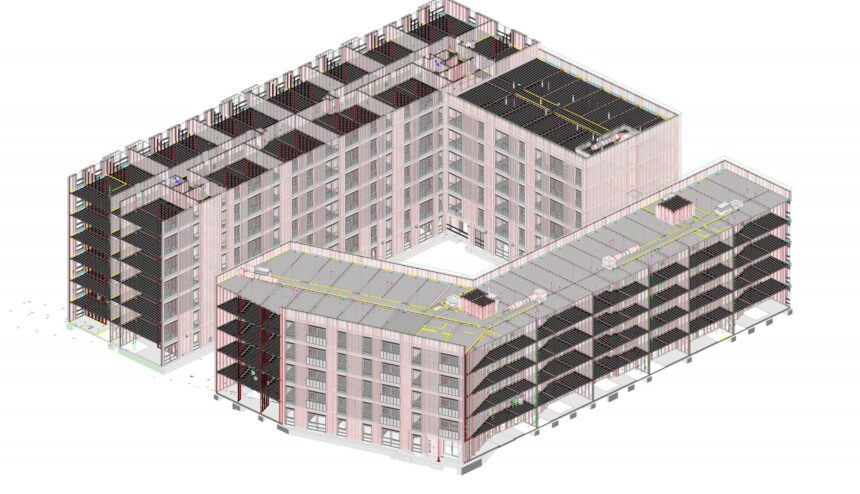Building Information Modelling (BIM) is revolutionizing the architectural, engineering, and construction (AEC) industry. It is a digital representation of the physical and functional characteristics of a building, providing architects and project managers an intelligent, 3D model-based process that gives insights and tools to plan, design, construct, and manage buildings more efficiently.
The Rise of BIM
BIM is not just a fancy 3D model of a building, it’s a comprehensive database of a building’s life cycle, from inception to demolition. This shift from traditional 2D drafting to a dynamic, 3D model-based process has tremendous implications for project management in the AEC industry.
Every element of a building can be modelled in BIM, and data about that element stored within the model. This allows everyone involved in a project to access and utilize the information they need, enabling more efficient decision-making process at every stage of the project. This is where architectural BIM services come into play, providing the necessary expertise and tools for effective implementation of BIM.
How Does BIM Enhance Project Management?
Improved Collaboration
BIM facilitates better communication and collaboration between all stakeholders. It provides a common platform and a unified, up-to-date model that everyone can work on. This eliminates the chances of miscommunication and errors due to outdated or inconsistent data. As a result, it helps in reducing rework, saving time and cost.
Efficient Planning and Scheduling
With BIM, project managers can visualize the entire project in 3D, identify potential issues in advance, and make necessary adjustments before the construction begins. This predictive approach, often referred to as “clash detection”, can save significant time and resources. Also, using the 4D capabilities of BIM, project managers can link the 3D components of the BIM model to the project timeline, enabling them to plan and schedule the project more efficiently.
Cost Estimation and Control
One of the most challenging aspects of project management is cost estimation and control. BIM provides a more accurate and faster method of cost estimation. Using the 5D capabilities of BIM, cost estimation can be done directly from the model, allowing project managers to monitor and control costs more effectively.
Improved Risk Management
BIM provides project managers with better visibility into the project, enabling them to identify and mitigate risks early. For example, by simulating different scenarios, project managers can assess the impact of changes and make informed decisions.
Sustainability and Environment
In addition to the project management benefits, BIM also contributes to sustainability in construction. BIM models can analyze energy performance and other environmental factors during the design phase, helping to create buildings that are more energy-efficient and environmentally friendly. This not only reduces the environmental impact of a building but can also lead to significant cost savings over the building’s life cycle.
The Future of BIM
The future of BIM is exciting, with advancements in technology paving the way for even more capabilities. Integration with technologies like virtual and augmented reality can provide immersive experiences, helping stakeholders to better visualize and understand the project. Moreover, the incorporation of artificial intelligence and machine learning could automate many mundane tasks, freeing up more time for project managers to focus on strategic aspects of the project. This future is being paved by innovative BIM drawing services, which are driving the evolution of BIM technology.
Conclusion
The adoption of BIM in the AEC industry is rapidly increasing, driven by its ability to deliver projects more efficiently. It provides a collaborative, model-based approach that offers a wealth of benefits for project management, including improved communication, efficient planning and scheduling, accurate cost estimation, and enhanced risk management.
However, it’s important to remember that BIM is just a tool. The key to leveraging its full potential lies in how effectively it is implemented and used. This requires a shift in mindset and a commitment to collaboration, transparency, and continuous learning and improvement. With the right approach, BIM can be a powerful enabler of efficient project management, helping to deliver projects on time, within budget, and to the highest quality.
In the future, as BIM technology continues to evolve, we can expect it to play an even more significant role in project management, driving further improvements in efficiency and effectiveness.


